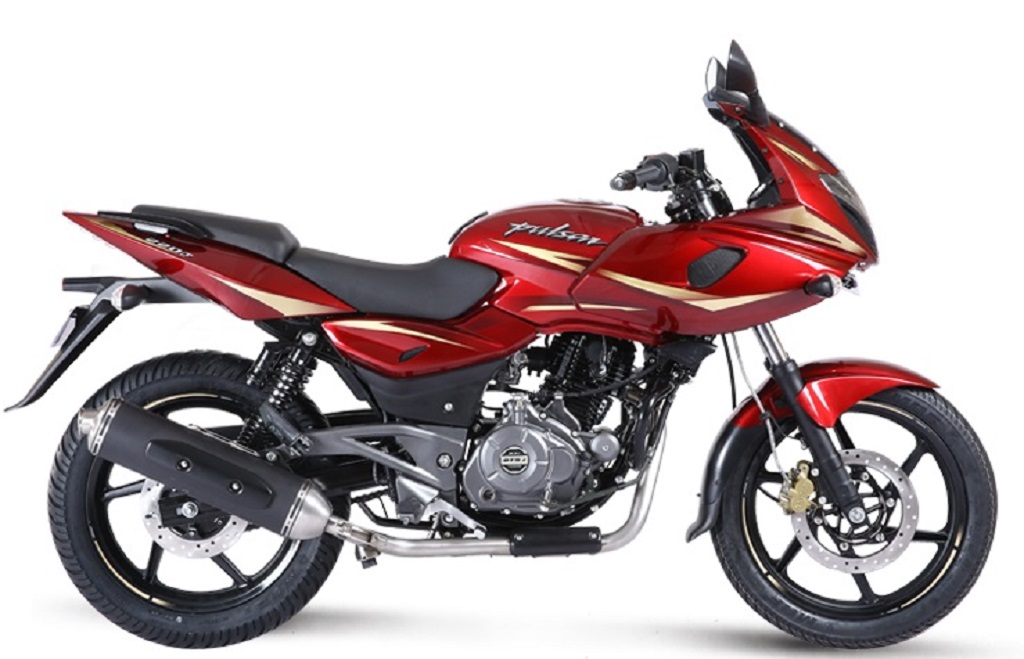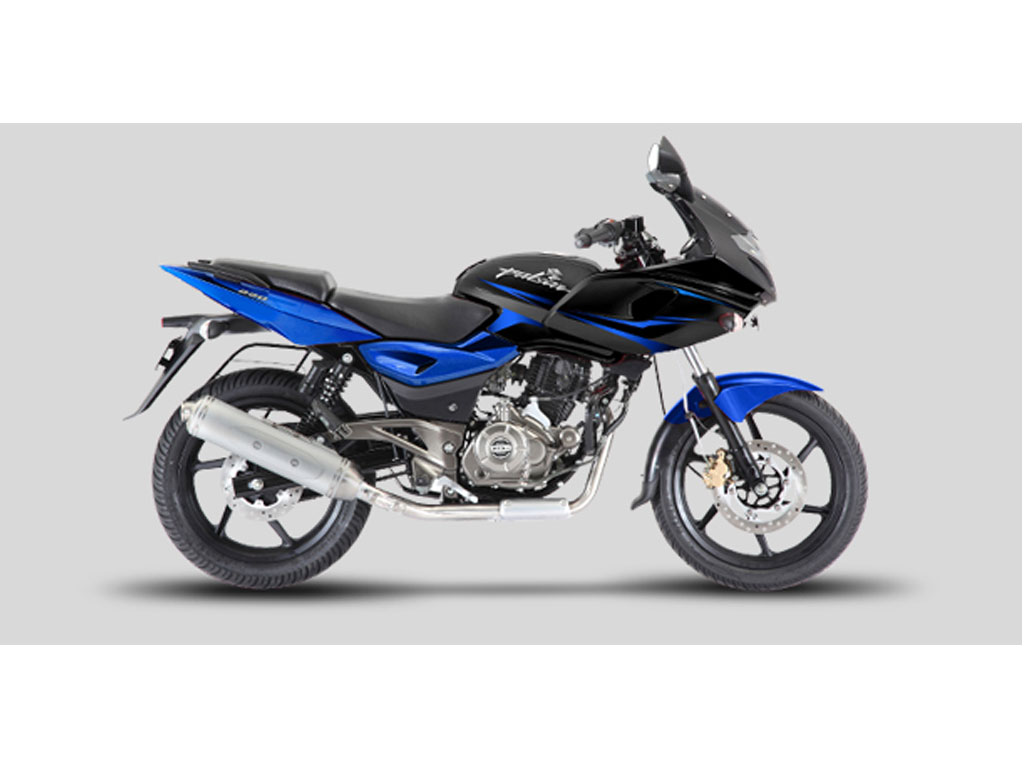Balanced riding position makes the Pulsar 220 a tourer’s delight!
Ergonomics – When it comes to seating, the Pulsar 220 has split seats, split grab rails, mildly rear-set footpegs and clip-on handlebars at its disposal. This results in an athletic stance for the rider without compromising on comfort at all. The Pulsar 220’s saddle is fairly accomodating and even taller riders won’t be complaining. Perched at a manageable height, the pillion seat is quite practical and roomy with sturdy grab rails to compliment. Bajaj Auto claims to have improved the seat cushioning which will come in handy on longer runs. The shaky rear view mirrors don’t jut out enough and are the only shortcoming we can think of on an otherwise formidable arrangement.
Power and torque figures see a marginal drop of 0.12 BHP & 0.57 Nm respectively
Performance – The Bajaj Pulsar 220’s most far-reaching change is incorporated in the 220cc oil-cooled engine and enthusiasts were skeptical about the detrimental effects on outright performance that might have ensued. To meet BS4 norms, Bajaj Auto has affixed a secondary air intake and EVAP system, revised the intake and exhaust manifold and plugged in a new CDI which gets a total of 5 maps (as compared to 2). This exercise has resulted in improved refinement, softer exhaust note and smoother power delivery. Those who were kindled by the erstwhile 220’s wild character are in for a dissapointment, but we believe that this slight performance drop is a fair trade-off for the enhanced smoothness in the usable RPM range.
Getting your knee down requires a fair bit of proficiency and experience
The Pulsar 220’s torque surge gives a feeling of being faster than it actually is!
Thanks in no small part to the 18.55 Nm of torque, the Bajaj Pulsar 220 feels decidedly superior in the low-end than its 150 kg kerb weight would have you believe. Power is everywhere, right from the initial part of the mid-range to the final bits near the redline, which means that downshifts aren’t bothersome while attempting fast overtakes. A mediocre gearbox paired to the smooth clutch action makes the motorcycle as confident in urban traffic as it feels on the highway. The company has replaced auto choke with a manual one but that said, the electric starter (or no kick starter, to put it in a better way) is bound to create problems, say on a rainy winter morning. Fuel efficiency, at 36 odd kms to a litre, isn’t its forte yet the Pulsar doesn’t disappoint in touring range with its 15-litre fuel tank.
Beware, the main stand hangs low enough to catch you out on corners!
Riding Dynamics – Compare it to its Perimeter frame-equipped rivals and the Pulsar 220’s handling will leave a lot to be desired. Mated to the cradle chassis is an equally inept suspension setup, comprising of telescopic forks at the front and nitrox-filled shock absorbers at the rear, which rob the Pulsar of the handling prowess required to exploit the engine’s output. Bajaj Auto has stiffened both the chassis and the suspension over the years but the hardware is such that it can’t hold a candle to the modern alternatives in terms of stiffness or cornering stability. While straight-line stability is par for the course, it is on the corners where the Pulsar 220 feels a bit clumsy. However, this translates to a pliant and absorbent ride quality over potholes and other road imperfections. Disc brakes are upto the task of shedding speeds but the lack of ABS is a downside.




